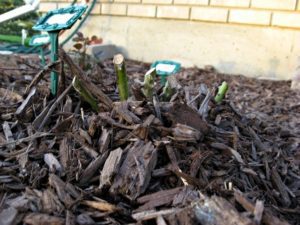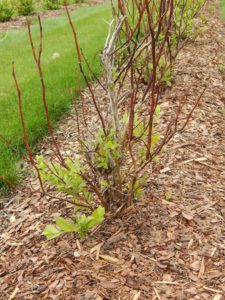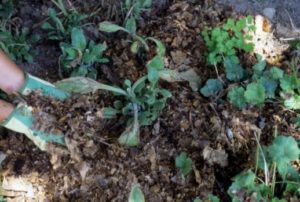
In the fall, we may spread a layer of conditioning soil or compost, however the primary reason for mulching in winter is to protect our plants from harsh winds and temperatures.
Mulch moderates the soil temperature, insulating it from outside temperatures. This can be extremely beneficial for any winter crops, such a garlic.

Mulch is great for controlling erosion. Living in especially sloping and/or bare areas exposed to the occasional heavy rain, erosion can be of much concern. Mulching helps reduce runoff as well as rain splash, which in turn can significantly reduce the spread of many types of plant disease organisms.
As previously stated, we do mulch in spring to suppress weeds. However, applying mulch this Winter will help prevent any new weeds from growing when temperatures start rising in the spring.
Mulch also creates an aesthetic appeal for your yard and garden. With your grass dying off and plants going dormant, adding mulch that looks like straw or pine needles looks a lot better than dirt. Create paths or walkways between rows of winter crops or plants, this will make your garden look more eye-appealing.
Woody plants don’t require as much protection as herbaceous perennials. However, a 2 – 4″ layer of shredded bark mulch or compost does help conserve the ground moisture. Just be sure not to pile it around the base of the plants. Keep it several inches from the stems or you’ll invite rodents who like the cover of mulch while munching on the bark. Mulching up against the stems also holds too much moisture against the plant, providing ideal conditions for diseases to take hold.
Begin garden mulching once your annual flowers or fall vegetable gardens have been harvested, or have died off. But prior to mulching, be sure to take the following steps:

Again, you would wait until the top of the plant has died back and the ground has frozen, before applying a layer of mulch.
(Especially important for fallow gardens, like vegetable gardens during winter.) Mulching unplanted garden beds can be

done at any time in the fall. Ideally, you would plant a winter cover crop and let it sit until you till it under in the spring.
Mulching will protect your plants, save you water as well as time pulling weeds this spring, and will keep your yard and/or garden pleasing to the eye. Also, make time to aerate and de-thatch your lawn. Fall is the perfect time to do so! If you have a pond as well, don’t forget to give it the treatment it needs during the coming season! Read our tips on maintaining your pond this fall/winter.